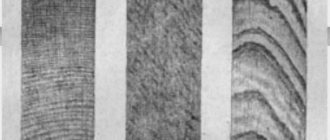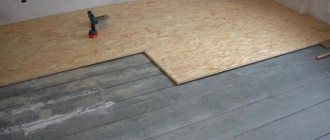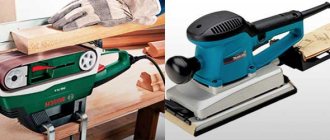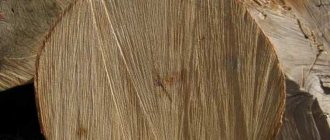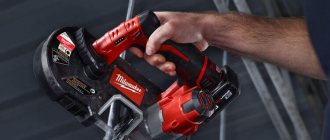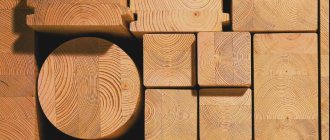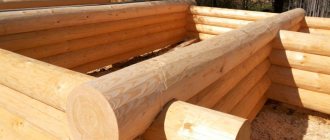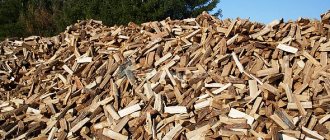The hardness of wood depends, quite logically, on the type of wood. Conventionally, wood can be divided by hardness into 6 groups: very soft, soft, medium hard, hard, very hard, hard like bone. Let's consider this division on the most famous varieties:
- very soft: willow, poplar, aspen, fir, spruce, white pine,
- soft: birch, alder, linden, larch, mahogany,
- medium hard: elm, walnut, black pine
- hard: oak, ash, apple, pear, cherry, teak,
- very hard: oak, hornbeam, beech, yew, white acacia, rosewood,
- hard as bone: ebony wood, coconut, guaiac wood.
Wood hardness is measured in Europe and America using different scales - Brinell and Jank, respectively; here is an example of the version we use, the Brinell scale.
Wood hardness according to the Brinell scale
To produce high-quality wood products, a craftsman needs to determine the hardness of the species. To determine it, the Brinell method is traditionally used. The essence of the method is to press a 10 mm ball into the surface of the workpiece with a force of 100 kg. The hardness value is determined by the nature of the damage and the diameter of the hole formed. Accordingly, wood with a higher hardness index is much more reliable and stronger than species with a lower hardness index.
Changes in hardness that occur during work with workpieces should also be taken into account. For example, the hardness of a wood species varies depending on the type of cut (with a radial cut, the wood is harder than with a tangential cut). Therefore, this table contains only average indicators.
Types of wood products and their features
All parts of wood can be used in the manufacture of not only decorative, but also utilitarian products. Some require a minimal amount of additional processing, others will require a significant amount of working time. Let's look at the main application of each part:
| Item no. | Piece of wood | Usage |
| 1 | Crown - branches and leaves | Decorative crafts from leaves, seeds; wickerwork from the branches of some trees and shrubs, original furniture |
| 2 | Trunk | Construction of log houses, obtaining lumber for the manufacture of furniture, windows, doors, building structures and finishing materials. |
| 3 | Roots | Making wickerwork, root sculpture – root plastics, garden furniture |
Root products
The root of any tree has an original texture, which is associated with the curvilinear arrangement of the fibers. Crafts made from tree stumps and their roots are beautiful and original. Sometimes, to get a sculpture, you just need to carefully study the shape of the stump and cut off all that is unnecessary.
Photos of chairs made of stumps
In the last century, wicker products based on long thin pine roots, harvested, like most roots for root grafting, at plant cutting sites were widely used. Currently, wicker furniture, vases, and flower pots are mainly made from willow vines.
In the southern regions, the root part of the trunk is used to make beautiful table tops for coffee tables. Due to the denser arrangement of fibers, the hardness of the wood of the roots exceeds the density of the trunk of the same plant.
Crafts from crown parts
The crown of many species has large reserves of ornamental materials. Oak and ash seeds, leaves and flowers are all used to make simple wood crafts. They are often available for joint creativity between parents and children.
Crafts made from tree leaves are well suited for children's creativity. They can simply be glued onto a suitable base, creating original paintings. But it’s better to print out any suitable drawing and make a collage, cutting out multi-colored parts.
Original mosaic painting
Acorns can be successfully used in making crafts from wooden sticks. Twigs imitate the limbs of people or animals, small trees and fences, and oak seeds are good for making torsos and heads. It is convenient to connect sticks with acorns by inserting them into holes drilled or pinned with an awl.
Crafts from trunk
Wood crafts for children can be made not only using twigs, seeds and leaves. For schoolchildren, you can use different types of lumber. Of course, their processing requires more tools, but the quality of work will be higher.
Available ways to make decorative wood crafts in school workshops as part of extracurricular activities are wood turning and carving. Both options are available, safe if a number of simple requirements are met and do not require a large supply of material and tools.
Turned bowls and plates
Note! Much attention should be paid to the use of wood waste. Original crafts made from wood shavings or sawdust do not require special skills, but with a skillful approach they can make many gifts for friends and relatives.
Wood Density
As you know, wood density and humidity levels are directly related. Therefore, for comparison, all workpieces lead to a single moisture level indicator - 12%. It is generally accepted that heavy wood has an increased margin of safety, while light wood is considered less reliable. Based on moisture content, wood is divided into three groups:
- Low-density species (pine, spruce, fir, cedar, poplar, linden, willow, walnut, chestnut);
- Medium density species (larch, yew, birch, beech, elm, pear, oak, elm, elm, maple, plane tree, rowan, apple, ash);
- High-density species (acacia, birch, boxwood, pistachio, dogwood);
The quality and hardness of wood is determined by several criteria. Below we will look at each of them in detail:
- Wear resistance. This concept refers to the ability of wood to resist corrosion and wear caused by friction of the material. Wear decreases with increasing hardness of the workpiece, and it is also characterized by uneven distribution over the surface of the workpiece. The lower the moisture content of the wood, the higher the wear resistance.
- Impact strength. The concept of impact strength refers to the ability of wood to absorb impact. Its level is determined by testing the workpiece for strength by dropping it onto an iron ball. On average, deciduous trees show 2 times better results than coniferous trees.
- Flexibility of wood. Obviously, this concept refers to the ability of wood to bend. Coniferous varieties have a low bending ability, while ring-shaped varieties (ash, oak) have a much higher ability. The flexibility of wood is important, first of all, in the manufacture of individual parts, where the wood has to be wetted or heated, and then given a special shape.
- Deformability. Wood is characterized by a rare property: at certain levels of load, small deformations are formed in the workpiece, which disappear along with the load. The main indicator of deformability is elasticity, which increases with the level of humidity of the product. When drying, some of the blanks lose the elasticity and natural flexibility of the wood, and along with it the ability to resist deformation.
From all of the above, we can conclude that the quality of parquet is determined by the principle “the higher the hardness of the wood, the higher the reliability of the parquet,” and the hardness itself is expressed by the Brinell value, that is, the difference in the hardness of different types of wood. On the other hand, no type of wood is able to withstand constant point loads from the legs of heavy furniture and the like, and the quality of the parquet itself only affects its durability and appearance.
Definition
Deciduous wood species grow in temperate climates, with standard seasonal alternation - spring, summer, autumn, winter.
Trees in deciduous forests reach a height of 25-30 meters. They are predominantly distributed in the northern hemisphere of the planet (North America, western and eastern Europe, eastern regions of Asia), but are also found in the southern hemisphere (Chile, Argentina).
Deciduous forests can grow separately, or they can be part of mixed forests.
Tapeworms - individual plantings of deciduous crops
For tapeworms, trees are selected with a well-formed or bizarre crown, unusual foliage, adapted to growing conditions, and resistant to damage by pests and viral infections.
Large estates are decorated with linden, chestnut, and maple trees. When planted separately, the tree trunk branches almost near the ground. As they grow, small branches intertwine and create openwork patterns. In winter, a tapeworm, devoid of foliage, sprinkled with snow, also looks very impressive.
In small areas, rowan berries, willows, some types of hawthorns, and maples are used for isolated plantings. They branch at a certain height, but the beautifully curved branches reach the ground and form a green, lush tent.
Treatment
Although birch wood is dense, it can be easily processed with any tool, both manual and mechanized. Processing on planing machines, manual milling machines, turning on lathes allows us to obtain clean surfaces of a high class of cleanliness. At the same time, the likelihood of chipping on products is very low, and with certain skills it is reduced to zero.
Cutting with chisels or knives both along and across the grain allows you to get very clean cuts. The main condition for this is a sharp tool. According to these characteristics, birch wood is superior even to linden wood.
Due to the fact that birch is very finely porous and dense, it lends itself well to grinding operations. The resulting surfaces are very smooth and have a silky soft shine.
Treated birch wood surface
The process of gluing birch wood blanks does not cause any difficulties; the glue adheres tightly to the wood, forming strong joints.
Mordants and stains perfectly color wood, and an imitation of mahogany or walnut is easily obtained. Varnishes and polishes easily adhere to birch wood, forming high-quality external coatings.
Other wood product options
You can make various original products with your own hands not from plant parts, but from other ready-made products that are widely used. On the Internet you can find an abundance of options for making crafts from wooden clothespins, ice cream sticks, corks, etc.
Clothespin lamp
At the dacha, crafts made from wooden boxes and pallets (pallets) in the form of original furniture began to be very often found.
Country furniture set made from pallets
Working with such materials is not difficult and any home craftsman can do it.
For those interested, here are our instructions:
- The first stage is the preparation of the necessary materials. Various enterprises located in the industrial zone of your city, chain stores, especially those selling furniture, appliances or building materials, as well as city landfills can help you. Having traveled around the indicated points, you will easily find a dozen or two discarded or forgotten usable pallets.
- the second stage is the design of the future product. You can do two things with found and brought pallets: disassemble them into separate slats and make products, or use ready-made structures.
- To make furniture from pallets, you only need a sander and a wood screwdriver. We polish parts of future armchairs, sofas, beds or tables, select the most successful ones from an aesthetic point of view and arrange them in the form of one design or another. We screw in sufficient screws at the joining points. To increase the comfort of the furniture, we recommend using ready-made soft pillows and mattresses.
Sofa made of pallets
- The original finish gives a special charm to products made from waste materials. Use bright dyes, stickers and applied decorative elements made of plaster or plastic. Hand-made furniture will look no worse than designer furniture, and the price of the products is minimal.
Table-pallet
Planting and caring for decorative species
Creating a landscape composition on a site begins with the placement of dominant plants. The choice of tree species composition is determined by: features of crop development, style orientation of design, size, topography of the site, composition, soil moisture, and other factors.
Growing several types of tree crops increases the likelihood of their preservation: pests and diseases often affect only certain species.
Oak
The mighty, sacred tree of the Slavs has many species. The most aesthetically pleasing ones in landscape projects are:
- English oak
- red oak
- sessile oak
Group plantings, compositions
It is customary to select an odd number of plants for compositions. The constant companions of oak are linden, maple, rowan, and ash. They develop harmoniously in the shade of a luxurious oak, emphasize its grandeur, and increase the aesthetics of the planting.
Birch trees are planted to mark alleys and site boundaries. The culture is attractive in small single-species plantings; in multi-stemmed groups it is combined with linden and elm.
Hedges are often formed from linden and maple trees. Group plantings combine woody plants with different flowering periods, original shapes of leaf blades, and bark. The compositions have a pronounced decorative effect, retain it throughout the season and effectively decorate the area.
Alder, birch, and aspen exquisitely complement the conifers.
Mechanical properties
Birch wood has high strength, resists shock loads well, and is difficult to split. Bending strength is average, bends well, elasticity is average.
Wear resistance is high, in these parameters it is almost not inferior to oak wood.
Resistance to fungal diseases and damage by insect pests is low. In the open air, birch products quickly become rotten and destroyed. Therefore, measures should be taken to protect wood from negative external factors and treatment with antiseptic materials should be used.
To dry birch wood, gentle conditions must be followed, as warping and cracking are possible. When drying under natural conditions, lumber must be bundled, which reduces the risk of warping of the workpieces. Drying under such conditions can last up to two years. In this case, the ends of the workpieces must be painted over with lime, paint, or sealed with paper using PVA glue. This will reduce cracking of the workpieces and minimize defects.
The fasteners hold well, but it is advisable to drill holes before using them. Although it is easier to screw a screw into a birch board than into an oak board, it also requires more effort.
Birch lumber
